Modern India Architecture
Prime Minister Narendra Modi has inaugurated a number of architectural landmarks in recent years, which have come to be known as the Modern India Architecture Legacy of New India. These buildings and structures represent a new era of development and prosperity for the country, and they are a testament to the creativity and ingenuity of the Indian people.
In addition to these physical landmarks, PM Modi has also spoken about the importance of developing a new architectural language for India. He has said that India needs to build “monuments of modern India” that reflect the country’s rich history and culture, as well as its aspirations for the future.
These buildings and structures are not only visually stunning, but they also represent a new era of progress and prosperity for India.
Kashi Vishwanath Corridor: A Major Boost for Religious Tourism in India
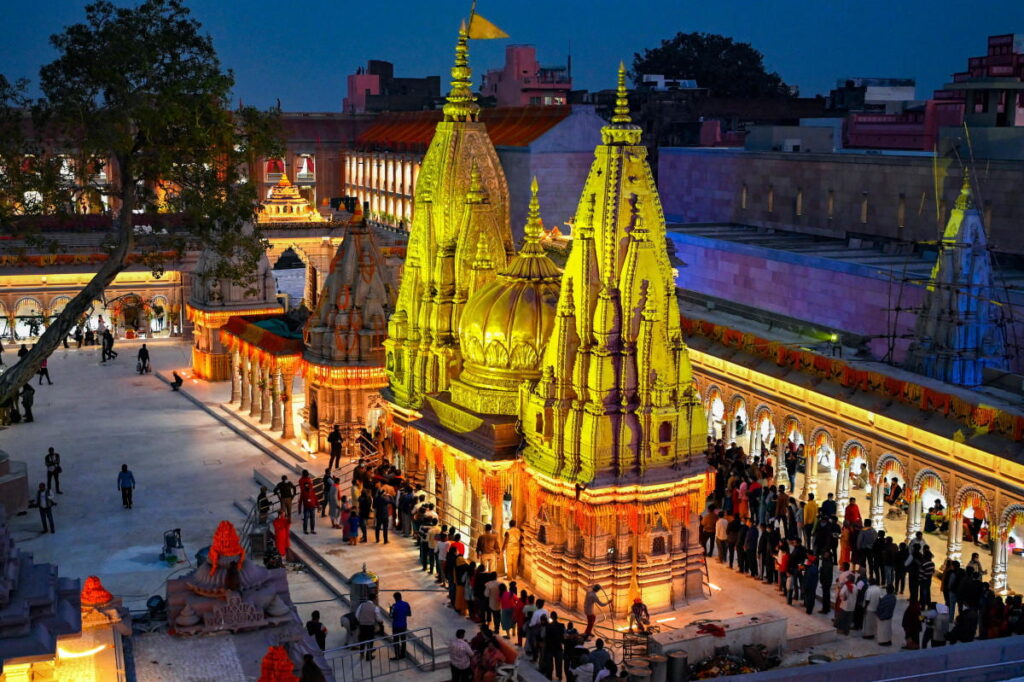
The Kashi Vishwanath Corridor is a ₹339 crore project to develop the area around the Kashi Vishwanath Temple in Varanasi, Uttar Pradesh. The project was inaugurated by Prime Minister Narendra Modi on December 13, 2021.
The corridor includes a number of features, including a new entrance gate, wide paved walkway, number of water fountains, number of murals depicting scenes from Hindu mythology, parking, number of shops and restaurants etc.
The corridor is designed to improve the experience of pilgrims visiting the Kashi Vishwanath Temple. It is also expected to boost tourism in Varanasi.
The Kashi Vishwanath Temple is one of the 12 Jyotirlingas, or sacred shrines of Shiva. It is located in the heart of Varanasi, a city with a rich history and culture. The temple is a popular pilgrimage destination, and is especially crowded during the Shravan month (July-August).
The Kashi Vishwanath Corridor is a major development project that will have a significant impact on Varanasi. It is expected to make the city more attractive to pilgrims and tourists, and to boost the local economy by showcasing Modern India Architecture.
Here are some of the benefits of the Kashi Vishwanath Corridor:
Overall, the Kashi Vishwanath Corridor is a major development project that will have a significant impact on Varanasi. It is expected to make the city more attractive to pilgrims and tourists, to boost the local economy, and to provide pilgrims with a more comfortable and convenient experience.
Mahakaleshwar Corridor Attracts Millions of Pilgrims
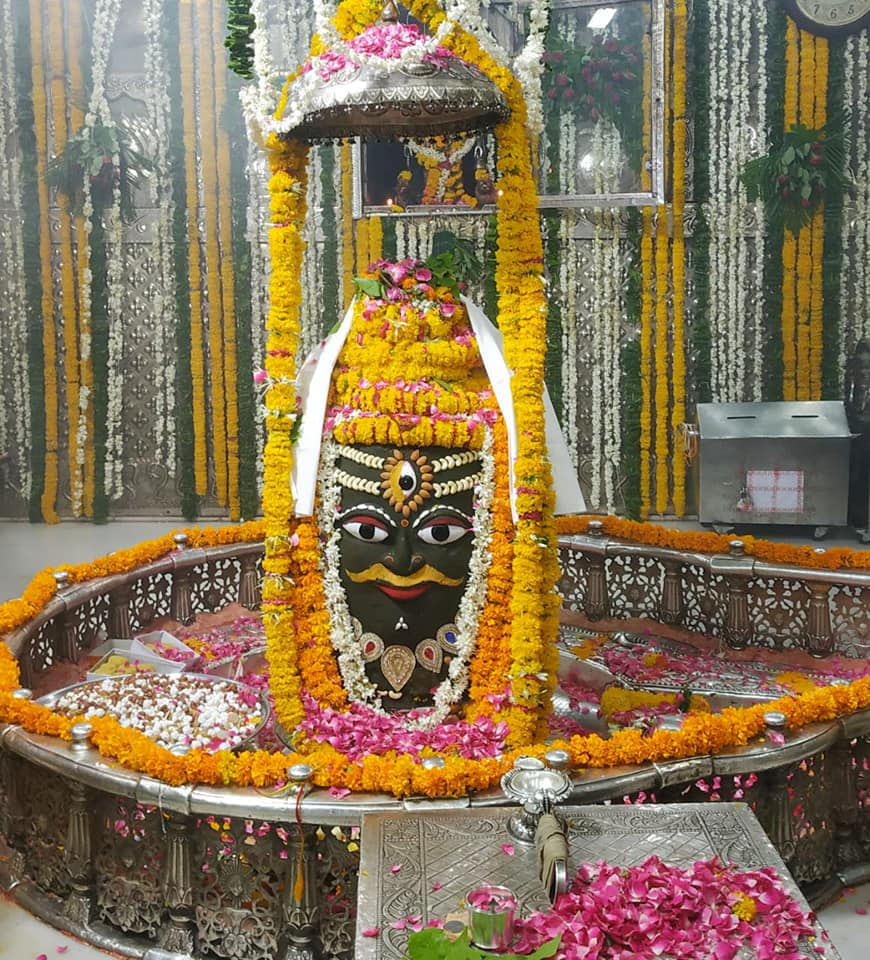
The Mahakaleshwar Corridor is a ₹850 crore project to develop the area around the Mahakaleshwar Temple in Ujjain, Madhya Pradesh. The project was inaugurated by Prime Minister Narendra Modi on February 2, 2023.
The corridor includes a number of features, including a new entrance gate, wide paved walkway, number of water fountains, number of murals depicting scenes from Hindu mythology, number of shops and restaurants etc.
The corridor is designed to improve the experience of pilgrims visiting the Mahakaleshwar Temple. It is also expected to boost tourism in Ujjain.
The Mahakaleshwar Temple is one of the 12 Jyotirlingas, or sacred shrines of Shiva. It is located in the heart of Ujjain, a city with a rich history and culture. The temple is a popular pilgrimage destination, and is especially crowded during the Shravan month (July-August).
The Mahakaleshwar Corridor is a major development project that will have a significant impact on Ujjain. It is expected to make the city more attractive to pilgrims and tourists, and to boost the local economy.
Here are some of the benefits of the Mahakaleshwar Corridor:
Overall, the Mahakaleshwar Corridor is a major development project that will have a positive impact on Ujjain. It is expected to make the city more attractive to pilgrims and tourists, and to boost the local economy.
India’s New Parliament Building: A Symbol of Modernity and Progress
The new Parliament of India is a triangular-shaped building located in New Delhi. It was inaugurated on May 28, 2023 by Prime Minister Narendra Modi. The building has a built-up area of 64,500 square meters and can accommodate up to 1,272 members of Parliament. The Lok Sabha chamber has a seating capacity of 888, while the Rajya Sabha chamber can seat 384 members. The new Parliament building is part of the Central Vista Redevelopment Project, which is a major overhaul of the government’s administrative and ceremonial spaces in New Delhi.
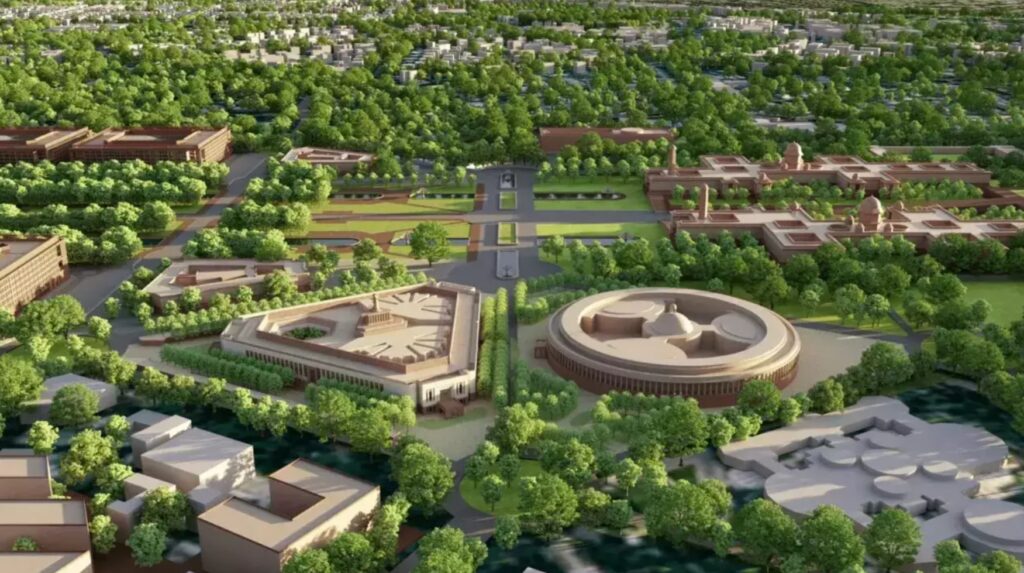
Credits – TOI
The new Parliament building was designed by architect Bimal Patel. It is made of sandstone and granite, and its exterior is decorated with motifs inspired by Indian culture and architecture. The interior of the building is spacious and airy, with large windows that let in natural light. The Lok Sabha chamber is located on the ground floor, while the Rajya Sabha chamber is located on the first floor. The two chambers are connected by a central hall that is used for joint sittings of Parliament.
The new Parliament of India is a triangular-shaped building located in New Delhi. It was inaugurated on May 28, 2023 by Prime Minister Narendra Modi. The building has a built-up area of 64,500 square meters and can accommodate up to 1,272 members of Parliament. The Lok Sabha chamber has a seating capacity of 888, while the Rajya Sabha chamber can seat 384 members. The new Parliament building is part of the Central Vista Redevelopment Project, which is a major overhaul of the government’s administrative and ceremonial spaces in New Delhi.
The new Parliament building was designed by architect Bimal Patel. It is made of sandstone and granite, and its exterior is decorated with motifs inspired by Indian culture and architecture. The interior of the building is spacious and airy, with large windows that let in natural light. The Lok Sabha chamber is located on the ground floor, while the Rajya Sabha chamber is located on the first floor. The two chambers are connected by a central hall that is used for joint sittings of Parliament.
The new Parliament building is a significant symbol of India’s democracy and a showcase of Modern India Architecture. It is a place where the people of India can come together to debate and deliberate on the issues that matter to them. The building is also a reminder of India’s rich history and culture.
Here are some of the key features of the new Parliament building:
Chenab Bridge: A Game-Changer for Indian Railways
The Chenab Bridge, a 1.3-kilometer-long railway bridge over the Chenab River in Jammu and Kashmir, is the world’s highest railway bridge at 359 meters above the riverbed. It is part of the Udhampur-Srinagar-Baramulla Rail Link (USBRL) project, which is expected to be completed in the end of 2023 or early 2024.
The Chenab Bridge is a major engineering feat. It was built using a cable-stayed design, which is a type of bridge that uses cables anchored to towers to support the deck. This type of design was chosen for the Chenab Bridge because it is more resistant to wind and earthquakes than other types of bridges.
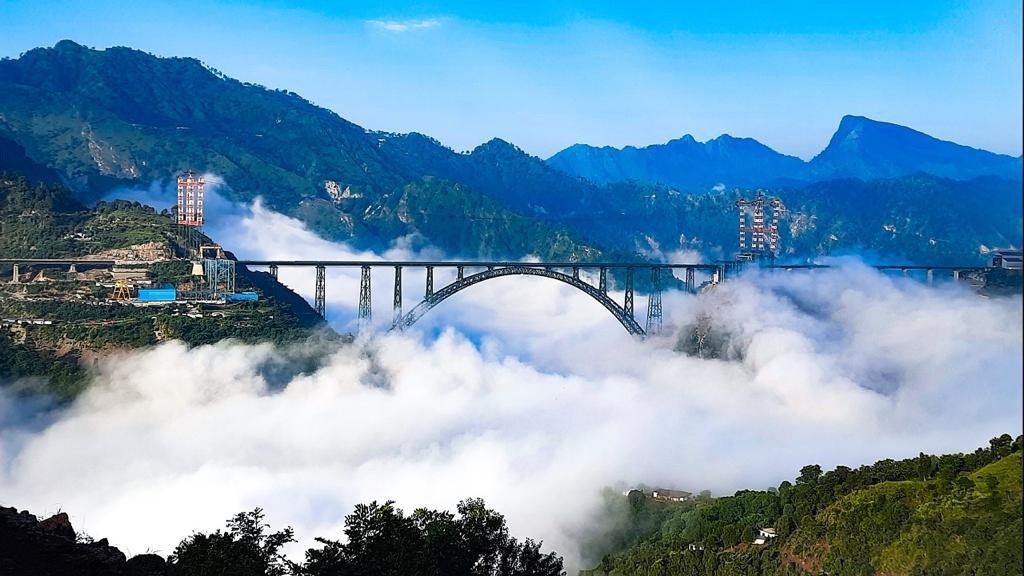
Credits – Twitter/@RailMinIndia
The construction of the Chenab Bridge was challenging. The bridge is located in a remote area with difficult terrain. The workers had to build 26 kilometers of approach roads and a 400-meter-long tunnel to reach the site of the bridge. They also had to work in high winds and cold temperatures.
The Chenab Bridge is expected to have a major impact on the region. It will provide a much-needed rail link between Jammu and Kashmir, which will boost trade and tourism. The bridge will also make it easier for the Indian Army to move troops and supplies to the region.
The Chenab Bridge is a major milestone for Indian Railways. It is a symbol of the country’s engineering prowess and its commitment to improving connectivity in remote areas. The bridge is also a major boost for the economy of Jammu and Kashmir. It is expected to create jobs and generate revenue, which will help to improve the lives of the people in the region.
Here are some of the benefits of the Chenab Bridge:
Atal Tunnel: Major boost for connectivity in the Himalaya
Atal Tunnel is a major boost for connectivity in the Himalayas. It is the world’s highest road tunnel, located at an altitude of 10,000 feet above sea level. The tunnel connects Manali in Himachal Pradesh with Leh in Ladakh. It was inaugurated by Prime Minister Narendra Modi on May 3, 2020.
The Atal Tunnel is expected to reduce the travel time between Manali and Leh by 4 to 5 hours. It will also provide a year-round road link between the two regions, which was previously only possible during the summer months.
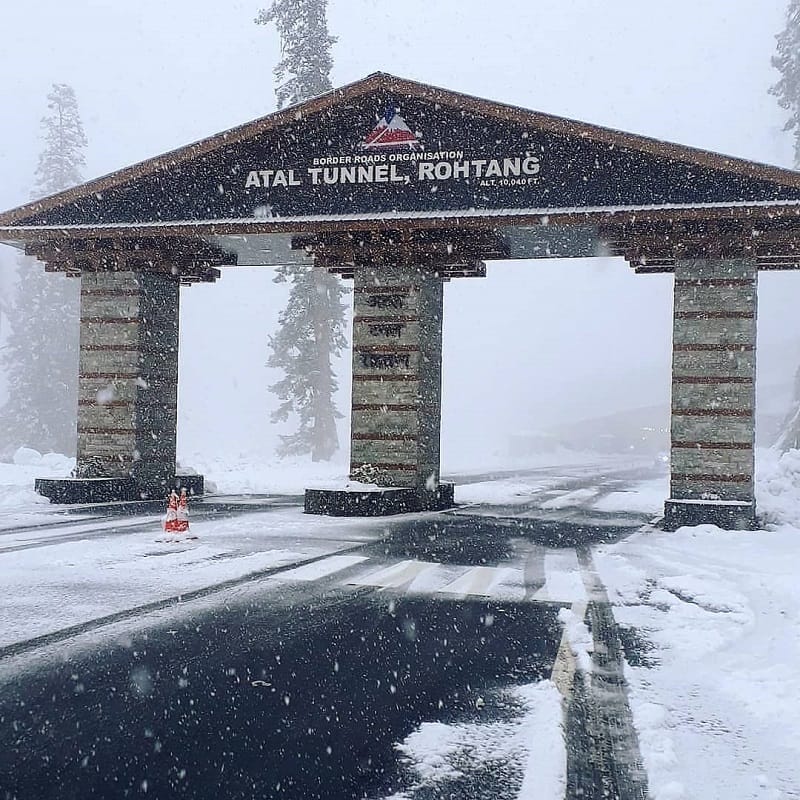
Credits – Postoast
The tunnel is expected to boost tourism in the region and promote economic development. It will also improve the security of the region by providing a faster and more secure route for the movement of troops and supplies.
The Atal Tunnel is a major achievement for India and is a testament to the country’s engineering prowess. It is a symbol of India’s commitment to improving connectivity in remote areas and promoting economic development.
Here are some of the benefits of the Atal Tunnel:
The Atal Tunnel is a major milestone for India and will have a positive impact on the region for many years to come.
Bogibeel Bridge: The Longest Rail-cum-Road Bridge in India
Bogibeel Bridge is the longest rail-cum-road bridge in India, spanning 4.94 kilometers across the Brahmaputra River in Assam. The bridge was inaugurated by Prime Minister Narendra Modi on December 25, 2018, and has significantly reduced travel time between the states of Assam and Arunachal Pradesh.
The bridge is a major economic and tourist attraction, and is considered a symbol of India’s progress. It is also an important strategic asset, as it provides a vital link between the Indian mainland and the northeastern states.
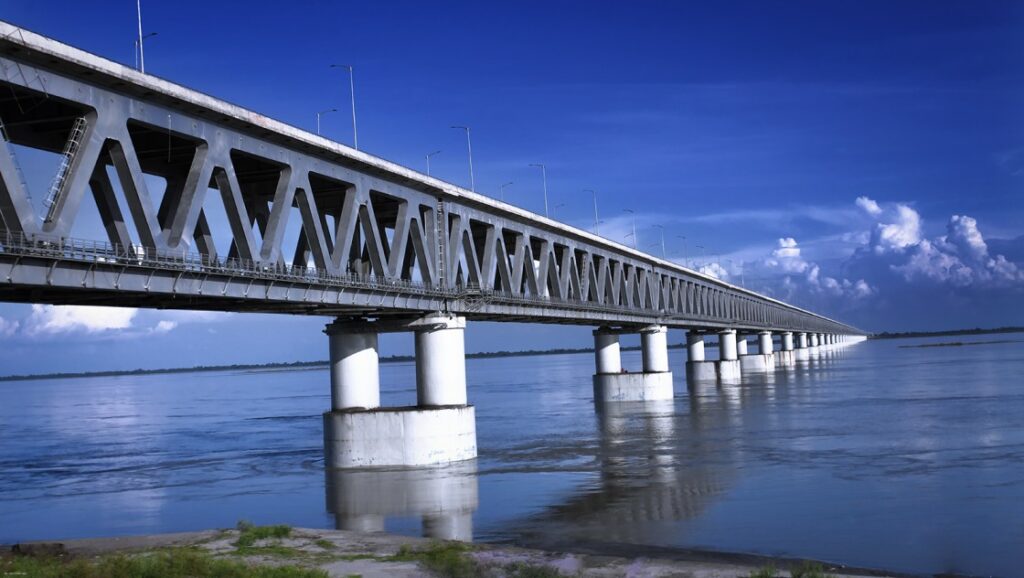
Credits – Wikipedia
Bogibeel Bridge is a stunning engineering marvel, and is a must-see for visitors to India. The bridge is made up of 428 spans, and is supported by 128 piers. The bridge is also equipped with a number of safety features, including earthquake-resistant foundations and a fire-fighting system.
Bogibeel Bridge is a major achievement for India, and is a testament to the country’s engineering and construction capabilities. The bridge is a symbol of India’s progress and a Modern India Architecture landmark. It is a source of pride for the Indian people.
Here are some additional facts about Bogibeel Bridge:
Bogibeel Bridge is a major achievement for India, and is a symbol of the country’s progress. The bridge is a must-see for visitors to India, and is sure to leave a lasting impression.
Statue of Unity: The World’s Tallest Statue
The Statue of Unity is a 182-meter (597 ft) tall statue of Sardar Vallabhbhai Patel, a prominent leader of the Indian independence movement and the first deputy prime minister of India. The statue is located on Sadhu Bet Island in the Narmada River, Gujarat, India. It was inaugurated on October 31, 2018, on Patel’s 143rd birth anniversary.
The Statue of Unity is the world’s tallest statue, surpassing the Spring Temple Buddha in China. It is made of 6,000 tonnes of bronze and has a viewing gallery at its chest level that offers a panoramic view of the surrounding area. The statue is a popular tourist destination and has attracted over 20 million visitors since its opening.
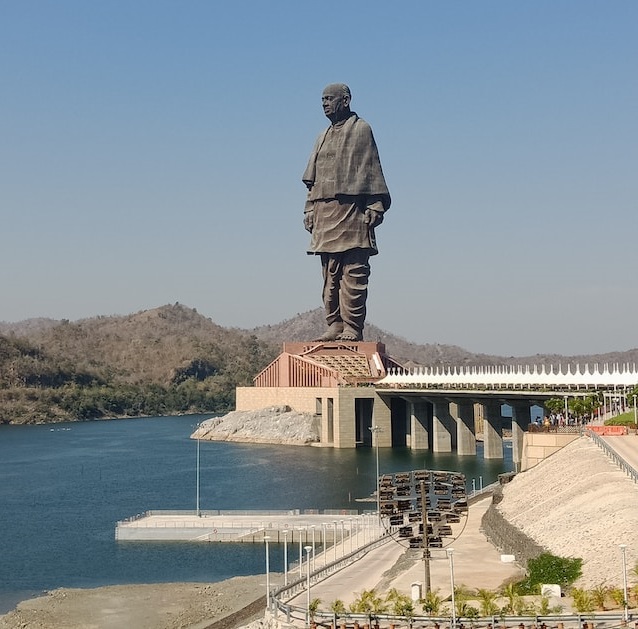
The Statue of Unity is a symbol of unity and pride for India. It is a reminder of Patel’s role in uniting the country after independence and his commitment to the values of secularism and democracy. The statue is also a testament to India’s engineering and construction capabilities.
The Statue of Unity is a must-see for any visitor to India. It is a powerful and inspiring monument that commemorates one of India’s greatest leaders and celebrates the country’s unity and progress.
Dhola Sadiya Bridge: India’s Longest Bridge over Brahmaputra River
The Dhola Sadiya Bridge, officially known as the Bhupen Hazarika Setu, is a beam bridge in India, connecting the northeast states of Assam and Arunachal Pradesh. The bridge spans the Lohit River, a major tributary of the Brahmaputra River, connecting the village of Dhola in the south to the village of Sadiya to the north, both in Tinsukia district of Assam, and providing convenient access to Arunachal Pradesh, whose border lies a short distance from Sadiya. The bridge is the first permanent road connection between the northern Assam and eastern Arunachal Pradesh.
At 9.15 kilometres (5.69 mi) in length, it is the longest bridge in India over water. However, the 9.76 kilometres (6.06 mi) Kacchi Dargah–Bidupur Bridge under construction in the Indian state of Bihar is expected to become the longest bridge in India upon its estimated completion in July 2023.
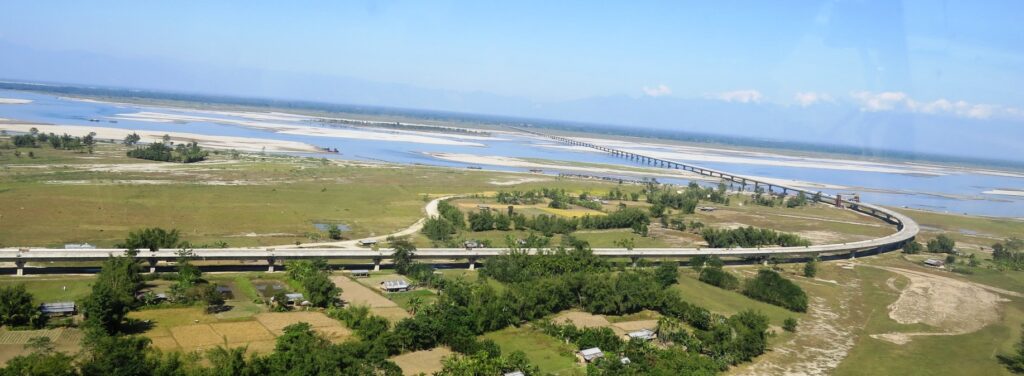
Credits – Wikipedia
The bridge was constructed by the National Highways and Infrastructure Development Corporation Limited (NHIDCL) at a cost of ₹1,000 crore (US$120 million). It was inaugurated on 26 May 2017 by Indian Prime Minister Narendra Modi and Nitin Gadkari (Minister of Road Transport and Highways). The bridge is named after Bhupen Hazarika, a singer, lyricist, actor, playback singer, filmmaker, and composer from Assam.
It has reduced the travel time between Assam and Arunachal Pradesh by several hours, making it easier for people to travel and do business. The bridge has also boosted tourism in the region, as it provides a scenic route to the popular tourist destinations of Dibrugarh and Tinsukia. It is a symbol of the progress that has been made in the northeast of India, and it is a testament to the vision and leadership of Prime Minister Narendra Modi.
Here are some of the benefits of the Dhola Sadiya Bridge:
The Dhola Sadiya Bridge is a major achievement for India and a symbol of the country’s progress. It is a valuable asset that will benefit the people of Assam and Arunachal Pradesh for many years to come.
Delhi Mumbai Expressway to Cut Travel Time by 12 Hours
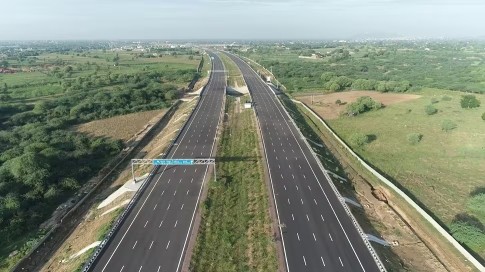
Credits – Zee News
The Delhi-Mumbai Expressway (DME) is a 1,483 km (921 mi) six-lane, access-controlled expressway connecting Delhi and Mumbai in India. It is the longest expressway in India and one of the longest in Asia. The expressway was built by the National Highways Authority of India (NHAI) and was inaugurated in 2019. The entire expressway is expected to be completed by June 2024.
The DME is a major economic corridor that is expected to boost trade and commerce between Delhi and Mumbai. It is also expected to reduce travel time between the two cities by up to 12 hours. The expressway has been built to international standards and is equipped with features such as electronic toll collection, CCTV cameras, and variable message signs.
The DME is a major tourist attraction and offers stunning views of the Indian countryside. The expressway is also a popular route for truckers and other commercial vehicles.
Here are some of the key benefits of the Delhi-Mumbai Expressway:
The Delhi-Mumbai Expressway is a major infrastructure project that is expected to have a positive impact on the economy and society of India. It is also a Modern India Architecture landmark that showcases the country’s engineering and construction capabilities.